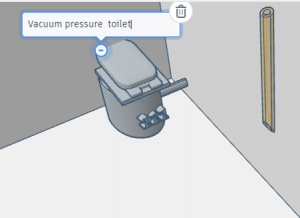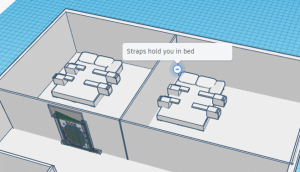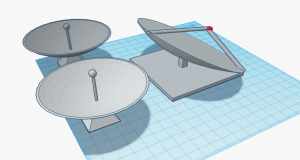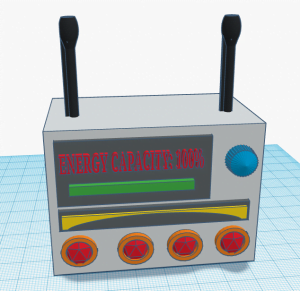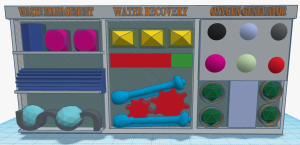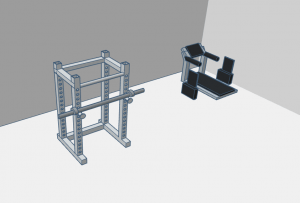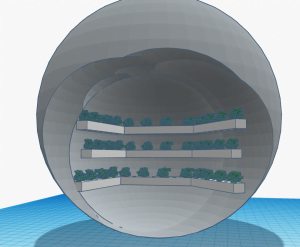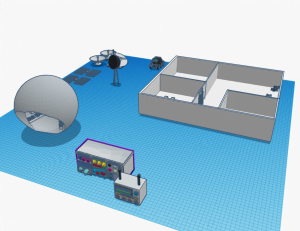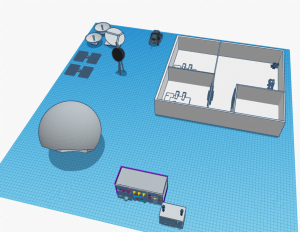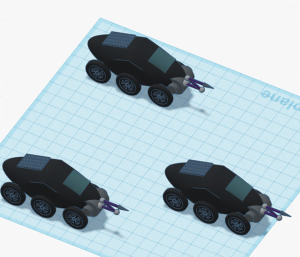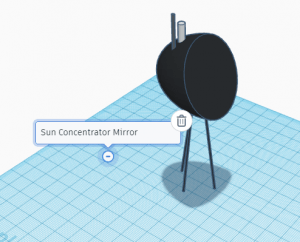Moon Camp Explorers Gallery 2020-2021
In Moon Camp Explorers each team’s mission is to 3D design a complete Moon Camp using Tinkercad. They also have to explain how they will use local resources, protect astronauts from the dangerous of space and describe the living and working facilities.
Team: AACENT
John A. Sutter Middle School Winnetka United States 14, 13
External link for 3d
|
Project description
Our Moon Base is mainly focused on the comfort and safety of our astronauts. We want astronauts to feel at home. We guarantee that our shelter will withstand meteors, radiation, and harsh weather. Our Moon Camp is designed for long term use and has all the necessities needed for a fulfilled stay. Polyethylene is our best friend on the Moon and will help us resist radiation when indoors or outdoors. Since we are located near the Atkins Basin, exploring the Moon will be filled with excitement and new discoveries. |
|||
|
Where do you want to build your Moon Camp?
Close to the Lunar Poles Why did you choose this location?
We are locating our moon camp in the South Pole because it’s the best option. There is constant sunlight, good temperature (0°- 50°C), and ice water. Nearly 100 million tons of water are believed to be stored in its indefinitely shadowed craters. Its craters have been untouched by radiation and sunlight for billions of years, creating an undisturbed record of the solar system’s beginnings. The South Pole is an excellent location for conducting science. Ice and other minerals could be present in the permanently shadowed sections of the South Poles. How do you plan to build your Moon Camp? Which materials would you use?
Our shelter will be a polyethylene inflatable structure and the perimeter of the shelter will be covered with 20 cm of 3d printed regolith. Rovers will be used to cover the inflated structure with heated and compressed regolith. Polyethylene is the material used to make plastic bags and when it’s compressed it can be strong enough to block out radiation. This combined with 20 cm of regolith will guarantee astronauts are kept safe from radiation, meteorites, and extreme temperatures. Explain how your Moon Camp will provide the astronauts with:
|
|||
|
Water
|
Food
|
Electricity
|
Air
|
|
We will mine frozen water from the estimated 10 billion tons of water per lunar pole. Light from the sun will be directed into the craters by mirrors to vaporize the ice and be caught in a dome. We will also extract oxygen from lunar soil and fuse it with hydrogen to make water. We will use giant mirrors to focus sunlight into a furnace about the size of an envelope, heating it to above 900C. Hydrogen brought from Earth can strip the oxygen from from the soil and bind with oxygen to make water. |
We plan to use multiple methods to keep our astronauts fed. First, we will transport dehydrated food with the astronauts. Additionally, we will plant vegetables in the base using hydroponic methods to provide fresh produce for the astronauts. Not only do the plants and vegetables provide food, but they also provide oxygen for the astronauts. We will use LED lights to support the plants. |
Our moon base is located on the Southern Hemisphere where the sun shines most of the time. This is why we plan to mainly use solar panels to power our camp. We will scatter multiple solar panels so we can maximize use of the sun. Due to the risk of meteor showers damaging the solar panels, we will also use batteries as a short term backup and nuclear power due to its reliability. |
We will get oxygen from the food we have planted and other methods. We will use the water recovery system, Sabatier system, and oxygen generator used on the ISS. All these systems feed off each other. The oxygen generator uses electrolysis to separate hydrogen and oxygen from water. We will use airlocks to keep the breathable air inside inside. |
|
Describe a day on the Moon for one of your Moon Camp astronauts
Upon awakening, the astronaut will head to the food storage and preparation room. This will be where they get their breakfast. The astronaut will add water to the freeze dried meal to rehydrate it for consumption. The astronaut may head to the bathroom where they could either take care of hygiene or use the toilets. They will then head to the exercise room to keep their muscles and bones healthy. They will do this for 1-2 hours with various machines such as the exercise bikes, treadmills, and ARED machines. After they finish their workout session, the astronaut will head to the monitor room to make sure everything is going according to plan. The astronaut may go exploring outside. They could scavenge the craters in the South Pole or use the rover to capture materials found on the moon. These materials can then be used to conduct research. The astronauts could also experiment with the growth of the plants under different types of light. They may then head to the communication room to communicate with Earth about their research findings. They are also given the opportunity to talk with their loved ones if they would like to. If they complete all their tasks, they can head to the recreation room and relax. If it is late, the astronaut may head to sleep. When they are ready to sleep, they must strap themselves to the bed to prevent them from floating away. |
|||



